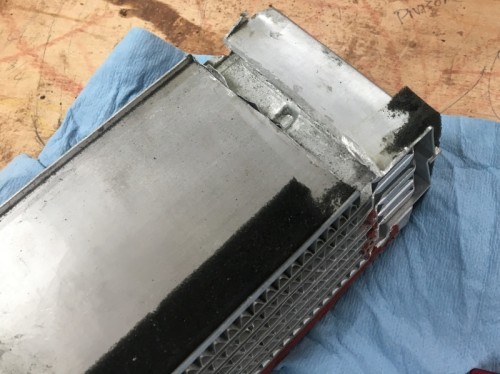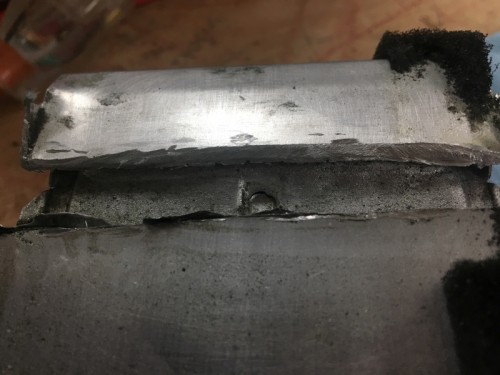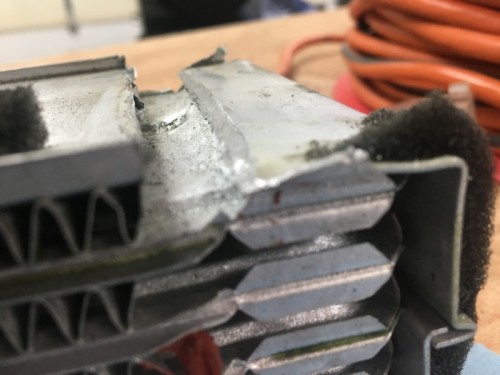Page 3 of 9
Re: Oil Cooler Structural Failure

Posted:
Thu Jan 18, 2018 3:00 pmby lutorm
SonexN76ET wrote:As a side note, I recommend you take Robert Hoover’s VW blog with a grain of salt. He was an enthusiastic VW hobbiest and someone with strong opinions who loved to write. He had nowhere near the experience of John Monnett, Great Planes, Hummel, or Rev-master.
I couldn't tell whether you meant the preceding paragraph to apply to Bob Hoover as well but, just to be clear, he was also in the business of converting VW's for aircraft use. As for who has the most experience, I wouldn't know. Like anyone's advice, his should be taken with a grain of salt.
Re: Oil Cooler Structural Failure

Posted:
Thu Jan 18, 2018 4:40 pmby SonexN76ET
In regards to Robert Hoover’s VW blog, there is a huge difference between engineering and producing 1,500 plus engines like AeroConversions has with Robert Hoover helping to build a handful of engines.
I will give you another example of Robert Hoover’s bad advice. He recommends if your oil pressure relief plungers are sticking is to put valve grinding compound on them and to stick them back in your engine and spin them and push them up and down until they loosen up. Now, unless you are going to disassemble your engine there is not going to be a way to get that abrasive valve grinding compound out of the narrow oil galleys above the plungers.
Please be careful whose advice you follow.
Jake
Re: Oil Cooler Structural Failure

Posted:
Thu Jan 18, 2018 5:13 pmby kmacht
That specific advice was for during engine assembly when you could clean it out. I would treat every piece of advice as skeptical even if from the factory. They denied issues with the #4 bearing restrictor plug until they diddnt. Their mags were bad until suddenly they werent. They also have issues with the turbo but are still selling it without a fix in place. It's always best to look at each piece of advice and see what their motivations might be. Sonex is trying to stay in business and sell motors. What was Bob Hoover's motivation?
Keith
Re: Oil Cooler Structural Failure

Posted:
Thu Jan 18, 2018 8:01 pmby lutorm
In general, I've found most of Hoover's topics to advocate a very careful, take no chances, approach to assembling a VW engine, arguing specifically that you can't just buy a bunch of VW parts these days and think that they'll go together without careful checking of all the specifications. Much more so than the impression you get from the Aerovee assembly manual. Is it all necessary? I don't know, but you can't fault the guy for being careless.
As an example, the Aerovee manual mentions nothing about checking the cam timing. Hoover does, and when I did, I found my cam to be 4 degrees off.
Re: Oil Cooler Structural Failure

Posted:
Fri Jan 19, 2018 1:26 amby gammaxy
lutorm wrote:As an example, the Aerovee manual mentions nothing about checking the cam timing. Hoover does, and when I did, I found my cam to be 4 degrees off.
You certainly pay a lot of attention to detail and I enjoy reading about it here and on your blog. Hoover makes it sound like you'll have serious issues with 4 degrees of error, but the dyno charts I've found make the differences seem fairly minor (compared to the story he shared). I believe you'd need a dyno to determine what the optimal angle is in the first place since it depends on intake and exhaust design. If it is 4 degrees advanced, I'd probably be happy with it and wonder if it was intentional. 4 degrees retarded might require more research. In any case, it's probably a good idea to sanity check these sorts of details to make sure you're not off by a whole tooth or have a mis-machined camshaft, I just don't take Hoover's story and your measurement as evidence of an actual issue yet.
https://www.chevydiy.com/chevy-big-bloc ... in-events/http://forums.turbobricks.com/showthread.php?t=209648Noel,
Sorry for getting off-topic on your thread. Hearing about your blown oil cooler is heart breaking. What a mess. I also have a top-mounted cooler with about 250 hours on it and have flown it a number of times in temperatures around freezing or a little lower (a couple of times this week, even). I run 20w50 but would be interested in something a little thinner. I'm thinking you must have received a bad cooler. I like the idea of pressure testing them before installation as was mentioned earlier, but don't know what pressure I'd use. Let us know if you find anything on the cooler that could be inspected to detect a bad one.
Re: Oil Cooler Structural Failure

Posted:
Fri Jan 19, 2018 9:48 amby bvolcko38
On my Aerovee, with top mounted oil cooler, I had to file away a good 1/4" of the boss behind the oil cooler. The boss interfered with the cooler
BV
Re: Oil Cooler Structural Failure

Posted:
Fri Jan 19, 2018 12:00 pmby pete 212
Hi for those with high oil pressure, I had an aerovee that blew 2 coolers 1 temp senders and some filters, then I put a mechanical press gauge on and got 250 yes 250 psi and the ONLY way to bring it down was to do everything on the last page of the samber link, you could take the relief out and grind a X about 1/16 deep on the top to get the oil the full diameter of the piston, having worked in hydraulics it made perfect sense. Pete212
Re: Oil Cooler Structural Failure

Posted:
Fri Jan 19, 2018 3:45 pmby NWade
gammaxy wrote:I'm thinking you must have received a bad cooler. I like the idea of pressure testing them before installation as was mentioned earlier, but don't know what pressure I'd use. Let us know if you find anything on the cooler that could be inspected to detect a bad one.
So I used lightly compressed air to confirm where the oil cooler lost integrity. I carefully used a Dremel cutoff wheel to slice away the lower plate on the cooler, and the photos show you what I found. Its definitely a structural failure and it appears to be from an over-pressure event. The photos don't show it super-clearly, but its obvious that the end of the cooler where the flow wraps around between the bottom oil channel and the second oil channel distorted/swelled under pressure. The middle section of this piece held its shape while the material around it stretched, leading to a tear in the metal. There may be other failures in nearby areas that I didn't uncover; this seems like a small hole for over 1 quart of oil to escape in ~10 seconds - but then again it _was_ under a lot of pressure! I wouldn't be surprised to find a similar failure on the upper part of this same channel/area, given the distortion of the metal around this corner...

- Oil Cooler with bottom section removed

- Closeup of the failure

- Swollen section
--Noel
Re: Oil Cooler Structural Failure

Posted:
Fri Jan 19, 2018 4:25 pmby Rynoth
Noel, where did you get your oil cooler from?
I think it's worth mentioning that the top-mount oil cooler is not an Aeroconversions-sourced part, rather you have to buy them from a 3rd party. Any of us with top-mount oil coolers on an Aerovee or Aerovee Turbo might very well have coolers that come from different places.
Re: Oil Cooler Structural Failure

Posted:
Fri Jan 19, 2018 4:40 pmby NWade
Rynoth wrote:Noel, where did you get your oil cooler from?
I think it's worth mentioning that the top-mount oil cooler is not an Aeroconversions-sourced part, rather you have to buy them from a 3rd party. Any of us with top-mount oil coolers on an Aerovee or Aerovee Turbo might very well have coolers that come from different places.
This is correct, and I don't believe I've indicated otherwise in my previous comments on this thread.
As for the source of my original part, it came from CB Performance (as recommended in the AeroVee Turbo assembly manual). I've purchased a replacement from another source, via Amazon but looking at them side by side I can tell its the same part. I will say that the replacement part does look like it was handled more-gently than the one I got from CBP, though.
Take care,
--Noel